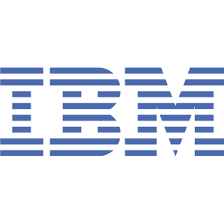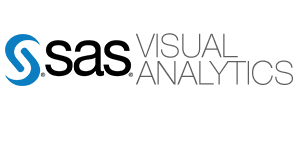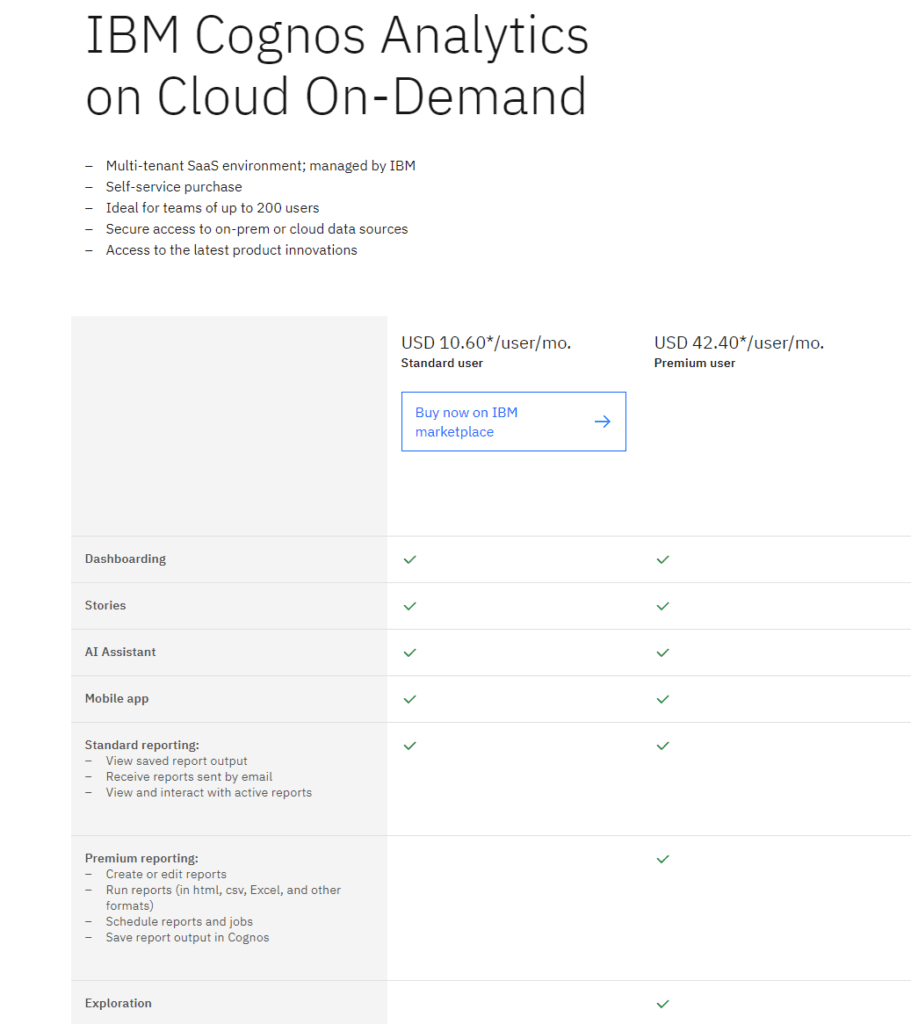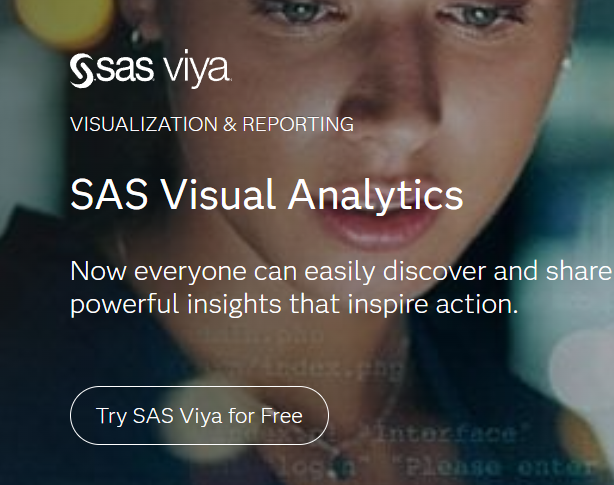Choosing the right analytics tool can feel like navigating a maze blindfolded. You’re aware that reaching the end could significantly empower your business decisions, but the path is fraught with similar-sounding options and tech jargon that could easily lead you astray. In the bustling marketplace of business intelligence (BI) tools, IBM Cognos Analytics and SAS Visual Analytics stand out as two of the luminaries, offering a beacon of hope with their advanced capabilities and robust features. But here’s the million-dollar question: which one is the best fit for your organization? In this comprehensive comparison, we peel back the layers to understand what sets these platforms apart. From user-friendliness and data integration to scalability, performance, and cost, we delve into the nitty-gritty to help you make an informed decision. Whether you’re a data analyst looking to crunch numbers more efficiently or a business leader aiming to glean actionable insights, read on to find out which tool holds the key to unlocking your data’s potential.
| IBM Cognos Analytics | SAS Visual Analytics |
|---|---|
 |  |
| G2 Score – 4.0 out of 5 stars | G2 Score – 4.4 out of 5 stars |
| TrustRadius Score – 8.1/10 | TrustRadius Score – 8.4/10 |
Ease of Use
Getting to Know the Interface
When you first open up any software, it’s the interface that greets you. It’s the first handshake, the first “hello,” and let’s be honest, first impressions matter. So, let’s talk about how IBM Cognos Analytics and SAS Visual Analytics welcome you into their world of data exploration.
IBM Cognos Analytics: Your Friendly Guide
IBM Cognos Analytics is like that friend who takes you on a guided tour through a new city. It’s designed with the user in mind, aiming to make your journey through data as smooth as possible. The interface is sleek, modern, and, most importantly, intuitive. Even if you’re not a data analyst by trade, Cognos tries to make you feel like one, with drag-and-drop features, interactive dashboards, and clear, actionable insights.
The tool also offers personalized dashboards, which means you can set up your workspace exactly how you like it. Imagine having your own desk, where everything is exactly where you need it to be. That’s Cognos for you. Plus, it’s equipped with AI features that help automate some of the more tedious tasks, like data preparation and analysis. It’s like having a personal assistant who knows exactly what you need before you even ask.
SAS Visual Analytics: The Power Behind the Throne
SAS Visual Analytics, on the other hand, is like the wise sage who has seen it all. It’s powerful, no doubt about it. Designed for those who aren’t afraid of the nitty-gritty of data analysis, SAS offers a depth of exploration that’s hard to match. The interface might not be as immediately welcoming as Cognos’, but what it lacks in instant appeal, it makes up for in sheer capability.
For the data wizards out there, SAS is your playground. It offers advanced analytics, predictive modeling, and a wide range of statistical capabilities. The learning curve is steeper, but reach the summit, and you’re rewarded with insights that can truly transform your business. SAS Visual Analytics encourages you to dive deep, explore every nook and cranny of your data, and uncover secrets you didn’t even know were there.
Data Integration and Connectivity
The Lifelines of Your Business
IBM Cognos Analytics: The Universal Donor
IBM Cognos Analytics stands as a beacon for organizations that are grappling with the intricacies of integrating data from disparate sources. Its architecture is meticulously designed to not just accommodate but to streamline the flow of data from various origins into a cohesive, analyzable whole. This is achieved through a sophisticated layer of abstraction that simplifies data without stripping away its richness or complexity.
Cognos Analytics acts as a conduit, through which data, regardless of its source or format, can be channeled into the analytics engine with ease. This seamless integration is a boon for businesses that operate across different platforms and databases, offering them a unified view that is essential for making informed decisions. The platform’s versatility in connecting with both on-premise and cloud-based data sources underscores its role as a versatile tool in the data integration toolkit.
SAS Visual Analytics: The Specialist
On the other side of the spectrum, SAS Visual Analytics brings to the table its profound expertise in handling data analytics, with a strong emphasis on the quality and integrity of data integration. SAS’s approach is centered around providing a robust platform for not just integrating data but also ensuring that the data being analyzed is clean, accurate, and ready for advanced analytical tasks.
The platform excels in dealing with complex data structures and large datasets, employing sophisticated algorithms to preprocess and transform data into a format that is optimized for analysis. This focus on preparing high-quality data for analysis is particularly valuable for organizations that rely on precision and depth in their analytics endeavors. SAS Visual Analytics ensures that the foundation upon which analytical models and visualizations are built is solid, thereby enhancing the reliability of insights derived from the data.
Scalability and Performance
Ensuring Your Analytics Can Grow with You
IBM Cognos Analytics: Built for the Enterprise
IBM Cognos Analytics, with its roots deeply embedded in the enterprise segment, is engineered to handle scalability and performance with a level of sophistication that anticipates the complex needs of large organizations. The platform is designed from the ground up to ensure that as the quantity of data and the number of users increase, the system can scale without a hitch.
This seamless scalability is achieved through a distributed server architecture that allows the workload to be evenly distributed across servers. This not only enhances performance but also ensures high availability and fault tolerance. As businesses grow, they can add more servers or move to more powerful hardware without worrying about extensive reconfiguration or downtime. The architecture of Cognos is such that it maintains efficiency and responsiveness, whether catering to a handful of users or thousands, making it a stalwart companion for businesses on a growth trajectory.
SAS Visual Analytics: High Capacity for High Complexity
On the flip side, SAS Visual Analytics brings to the table its prowess in handling high volumes of data and complex analytical computations without breaking stride. The secret sauce behind SAS’s performance capabilities lies in its innovative use of in-memory analytics. This approach allows for rapid processing of data, enabling users to explore large datasets and perform complex analyses in near-real time.
What stands out about SAS Visual Analytics is not just its ability to scale vertically by adding more power to the existing infrastructure but also its emphasis on optimizing data handling and processing to ensure that performance is not compromised. The platform’s architecture is built to ensure that analytical queries are executed efficiently, minimizing response times even as the data grows in volume and complexity. This focus on maintaining high performance under heavy loads makes SAS an attractive option for organizations that prioritize depth and speed of analysis.

Related: Check out our free SEO suite

Customer Support and Community
Navigating the Analytics Journey Together
IBM Cognos Analytics: Comprehensive Support Backed by IBM’s Legacy
IBM Cognos Analytics benefits from the vast infrastructure and legacy of IBM’s support network. Customers can expect a wide range of support options, including dedicated support teams, an extensive knowledge base, and IBM’s premium support services for critical issues. IBM’s global presence also means that support is available across time zones, ensuring help is at hand whenever it’s needed.
Beyond formal support channels, Cognos benefits from a large, active community of users. Forums, user groups, and social media channels are bustling with discussions, tips, and advice. IBM also facilitates regular webinars, user conferences, and training sessions, offering users ample opportunities to enhance their skills, learn best practices, and network with other professionals.
SAS Visual Analytics: Specialized Support with a Focus on Analytics Success
SAS Visual Analytics enjoys the support of SAS’s dedicated customer service teams, known for their deep expertise in analytics. SAS provides a variety of support services, including technical support, consulting services, and educational resources, to ensure users can maximize the value of their analytics investment. The emphasis is on not just solving technical issues but also helping users understand and apply advanced analytics and statistical methods.
The SAS community is a tight-knit ecosystem of data analysts, statisticians, and business intelligence professionals. It’s a resource-rich environment where users can find answers, share insights, and access a wealth of best practices and how-to guides. SAS’s support for professional development, through workshops, certification programs, and e-learning, further enriches the community.
Cost and Return on Investment
Balancing the Scales
IBM Cognos Analytics: Enterprise Value at a Cost

IBM Cognos Analytics is often seen as an investment in enterprise-grade analytics. With its comprehensive suite of analytics tools, robust data integration capabilities, and scalability, Cognos is designed to serve the needs of large organizations and complex data environments. However, this comes with a price tag that reflects its enterprise positioning.
The total cost of ownership for Cognos includes not just the licensing fees but also the infrastructure costs, implementation, and ongoing maintenance. While these costs can be significant, the ROI comes from Cognos’ ability to provide deep insights that can drive business decisions, improve efficiency, and identify revenue opportunities across a large organization.
For businesses that can fully leverage its capabilities, Cognos offers value that can justify its cost. The key is to evaluate whether your organization has the complexity and scale to make the most of what Cognos has to offer.
SAS Visual Analytics: Specialized Analytics with Impact

SAS Visual Analytics is similarly positioned as a premium analytics tool, targeted at organizations that require advanced analytics capabilities. It is renowned for its analytical depth, including predictive modeling and machine learning, which can unlock significant value from your data. The cost of SAS Visual Analytics encompasses licensing, infrastructure, and the skilled personnel required to operate it effectively.
The ROI from SAS Visual Analytics is often realized through its impact on decision-making and strategic planning. By enabling sophisticated data analysis, it can uncover trends and patterns that inform critical business decisions, leading to cost savings, increased revenue, and competitive advantages.
However, the initial and ongoing costs can be a barrier for smaller organizations or those with less complex analytics needs. It’s crucial for businesses considering SAS to assess whether the advanced capabilities of the platform align with their strategic goals and have the potential to drive sufficient ROI.
Conclusion
IBM Cognos Analytics, with its user-friendly design and AI-enhanced features, provides a highly accessible platform for users across the board, from novices in data analytics to seasoned professionals. Its broad connectivity options ensure that organizations can harness data from diverse sources, bringing it together for comprehensive analysis and reporting. Coupled with IBM’s legacy of enterprise-level scalability and support, Cognos Analytics is a formidable choice for businesses looking for a reliable, scalable BI solution.
On the other hand, SAS Visual Analytics offers a powerhouse of deep analytical capabilities, catering to users who seek to delve into complex data analysis and predictive modeling. Its focus on high-performance in-memory analytics ensures rapid processing of large datasets, allowing for real-time insights that can be pivotal for decision-making. While it may present a steeper learning curve, the depth of analysis and quality of support provided make SAS Visual Analytics a compelling option for organizations with sophisticated analytics needs.
Read Next:





















